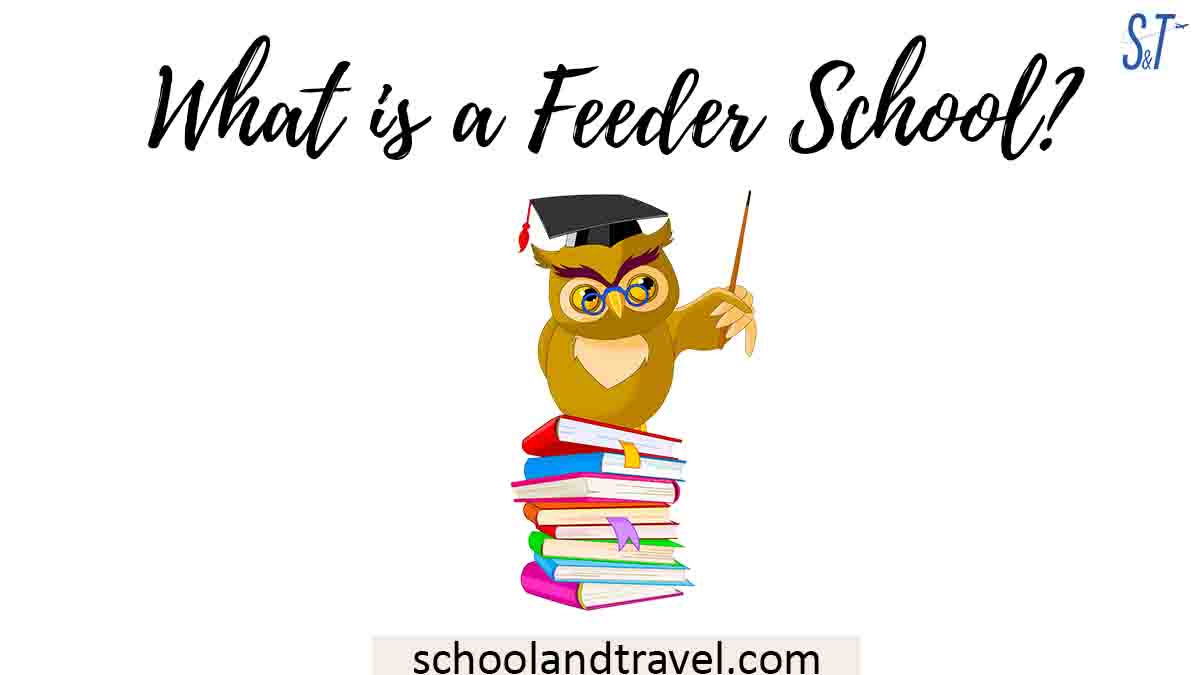We know that education is important, and an educational institution is called a school. This article will explain “what a feeder school is,” its advantages, disadvantages, and roles. So read on.
What is a Feeder School?
A feeder school is a lower educational institution from which graduate students enroll in a specific higher educational institution, for example, from a primary school to a secondary school or from a high school to a university or college.
Feeder schools, especially primary schools, usually agree with a specific secondary school to enroll a set number of their students when they graduate.
A university can have several feeder high schools which appear in affluent communities.
Feeder schools can be both public and private. However, they can also be boarding schools or charter schools. The number of students from the feeder schools accepted into higher institutions is usually high.
Specific secondary schools accept students from a feeder primary school. Specific universities or specific colleges accept students from a feeder high school. However, a feeder college or university’s students get admission into specific programs.
Applying to this school is not different from applying to a school that does not come under the banner of feeder schools.
Feeder schools have advantages and downsides, but most parents feel that if their children attend them, they will be admitted into Ivy League colleges. However, it only increases their chances, not assures them entrance.
What is a Feeder High School?
A feeder high school is a secondary school that students typically attend after graduating from specific middle or junior high schools.
It’s like the next step in their education path. Students from designated middle schools “feed into” or move to this high school.
However, attending a feeder middle school doesn’t always guarantee a spot in the high school; there may still be requirements to meet.
What is a Feeder College?
A feeder college is a college that regularly sends a significant number of its graduates to specific universities or advanced programs.
It’s like a stepping stone; students often attend this college knowing it has a track record of preparing and sending students to certain higher institutions or programs.
Who is a Feeder Student?
A feeder student progresses from one school to another as part of an established pathway.
For example, a student who moves from a middle school to a designated high school in the same education system might be called a feeder student.
This progression is usually based on geographic or system-defined routes.
Why are Feeder Schools on the rise?
Feeder schools are rising because some colleges they have affiliates with are 4-year colleges. Students, on the other hand, adore enrolling in four-year institutions.
However, some exceptions exist, as not everyone from feeder schools gets approval.
Although there are critics of feeder schools, studies show they are here to stay. The style of feeder schools also looks like how some companies choose their future employees, as some companies employ students from a particular school.
Being in this type of school means some classmates might be with you from primary school to secondary school to university.
On the other hand, some schools continue to be affiliated with feeder schools because feeder schools are known to be consistent. The benefits they continue to bring schools are consistent, too.
Read this: Easiest and Hardest Engineering Degrees to get
How Do Feeder Schools Work?
Feeder schools essentially act as stepping stones in a student’s educational journey. Often, there’s an established relationship or agreement between schools at different levels.
For instance, a primary school might feed a particular secondary school.
This means students from that primary school have a preferred or direct route of admission to the secondary school.
Parents might choose a certain primary school, knowing it feeds into a reputable secondary school. However, attending a feeder doesn’t always guarantee admission.
Factors like capacity, academic performance, and other requirements can influence the transition. Understanding these pathways can help families plan their child’s educational route.
Roles of a Feeder School
1. Producing Elite Students for Higher Education:
With skilled teachers, abundant resources, and a consistent feeder school system, students are well-prepared to excel among their peers in graduate programs.
2. Benefits in College Admissions:
Colleges or universities typically view students from feeder schools as strong academic candidates, increasing their chances of admission.
3. Streamlining Admission Processes:
Feeder schools play a role in narrowing down the selection pool. Given the limited slots in colleges or universities, feeder school students often have an edge and are more likely to secure a spot.
4. Cultivating Top-tier Students for Advanced Studies:
With the aid of expert educators and comprehensive resources, feeder schools ensure that their graduates are primed to stand out in higher educational platforms.
5. Gaining the upper hand in University Admissions:
Feeder school students often have a reputation for academic excellence, thus making them prime candidates for prestigious universities.
6. Selective Admissions & Feeder School Advantage:
Given the fierce competition for limited seats in top-tier colleges, feeder school students often have an inherent advantage, significantly enhancing their admission prospects.
7. The Symbiotic Relationship:
The dynamic between feeder schools and universities is mutual. While the former produces well-prepared students, the latter often gives preference to such students, recognizing their education quality.
Advantages of a Feeder School
- The students who graduate from a feeder school are usually elites.
- A feeder school has the resources, administrators, teachers, and knowledge to accept its students into competitive colleges.
- The knowledge the feeder school imparts to students is exceptional.
- The school increases the chances for their graduates to get admission into elite universities or colleges. Feeder schools already have a reputation as most students get accepted into these colleges or universities.
Disadvantages of a Feeder School
- It widens the gap between the students who are from the middle-class and lower-class communities. The gap widens because colleges and universities prefer to admit students from other schools, and feeder school pupils are typically from upper-class and rich families.
- A feeder school limits the diversity of students entering a higher educational institution. As most students from feeder schools come from the same area, it will limit the diversity i.e. race or culture of students coming into the school.
- It makes higher-level institutions miss smart students who are not from feeder schools. Here is how: as the number of students accepted into universities and colleges is limited, with students from feeder schools limiting it further, it is highly likely that universities or colleges will miss smart and genius students.
- It restricts the freedom of the children to choose the higher-level educational institution they want to join.
Examples of Feeder Schools
Some of the popular feeder schools are;
- Cornell University
- New York University
- Boston College
- Binghamton University
- University of Florida
- Washington University (St. Louis)
- University of Maryland
- University of Michigan
- Fordham University
- Emory University
- Georgetown University
- Wesleyan University
- Columbia University
- Tulane University
- Arcadia High School
- Loyola High School
Read this: Common app vs. Coalition app (Major Comparison)
FAQs on Feeder Schools
Feeder schools are high schools from which most or most students transfer to colleges and universities, frequently the most prominent ones like the Ivy League.
A “feeder school” is a higher education institution that ensures a certain number of its students get accepted into a targeted four-year university and major. Due to its ties to another institution, there is no need for an official link for a school to be considered a feeder school.
According to Zippia, Feeders make $31,642 per year on average in the United States or $15.21 per hour.
Conclusion:
This article explains the advantages and disadvantages of a feeder school. In applying for this type of school, check the criteria and requirements for entering the school. The path to a good higher-level educational institution won’t be difficult through proper preparation and planning.
Awesome one; I hope this article answers your question.
Editor’s Recommendations:
- Post-Secondary Degree (Meaning, types, and benefits)
- Community College Professor (How to, benefits, Salary)
- What does a 1st bachelor’s degree mean? (Quick Answer)
- Online Theatre Degree (Courses, Schools, Benefits)
- Should I bring my PC to College? (Quick Answer)
- Can you wear hats in College? (Quick & Best Answer)
- Can you bring snakes to College (Pet-friendly Colleges)
- Should I bring my console to College? (Best & Quick Answer)
If you find this article good, please share it with a friend.






